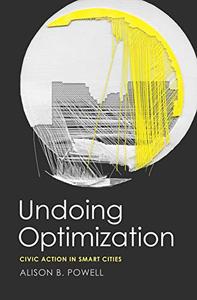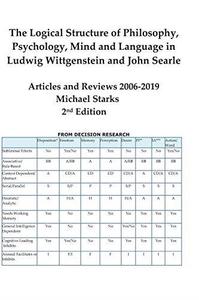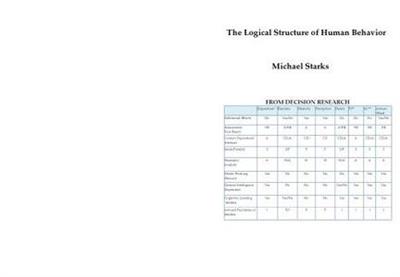
n-Track Studio Suite 9.1.4.4127 (x64) Multilingual | 142.6 Mb
n-Track Studio 9 turns your PC into an easy to use multitrack audio recording studio. It is the perfect tool for professional quality audio recording, encoding, mixing and editing. Record, edit, overdub your audio tracks, apply effects, process audio live input, mix and then burn audio CDs or create mp3 files.

Women of Byzantium By Carolyn L. Connor
2004 | 432 Pages | ISBN: 0300186460 | EPUB | 7 MB
Women played key roles in Byzantine society: some ruled or co-ruled the empire, and others commissioned art and buildings, went on pilgrimages, and wrote. This engrossing book draws on evidence ranging from pictorial mosaics and inscriptions on the walls of churches to women's poetry and histories, examining for the first time the lives, occupations, beliefs, and social roles of Byzantine women.In each chapter Carolyn L. Connor introduces us to a single woman-from the elite to the ordinary-and uses her as a springboard to discuss Byzantine society. Frequently quoting from contemporary accounts, Connor reveals what these women thought of themselves and their lives and how they remembered the lives of women who had lived earlier. Informative, sympathetic, and engagingly written, this book is a window into Byzantine culture and women's history that has never before been opened.

Walking Kung. breathing for health By Sheng Keng Yun
1997 | 138 Pages | ISBN: 087728895X | PDF | 21 MB
Let Professor Sheng show you how to relax and relieve stress--without expensive equipment or drugs. While these exercises are instrumental for the well-being of both men and women, this is one of the very few books that present a woman's perspecitve to learning Chi Kung. The exersices require minimal physical exertion--walking in place and breathing--and can be done by people of all ages. Walking Kung-- using conscious thought to move energy through the body's internal organs--is medicinal exercise that was once a carefully guarded secret in China. It encompasses simple meditation and complex, dance-like movements, controlled breathing, and guided imagery. Regular practice of Walking Kung can help regulate te nervous, circulatory, respiratory, digestive, and endocrine systems and help strengthen the muscular, skeletal, and immune systems. It has been proven to heal such chronic conditions as heart disease, asthma, and insomnia, and is done without exerting any strength. All that is needed to practice Walking Kung is confidence, ambition, determination, and steadfastness.

Undoing Optimization: Civic Action in Smart Cities by Alison B Powell
2021 | ISBN: 0300223803 | English | 224 pages | PDF | 2 MB
A unique examination of the civic use, regulation, and politics of communication and data technologies

The Penguin U.G. Krishnamurti Reader By Mukunda Rao ; U.G. Krishnamurti
2007 | 257 Pages | ISBN: 0143101021 | PDF | 1 MB
U.G. Krishnamurti UG KrishnamurtiMy Teaching, If That Is The Word You Want To Use, Has No Copyright. You Are Free To Reproduce, Distribute, Interpret, Misinterpret, Distort, Garble, Do What You Like, Even Claim Authorship, Without My Consent Or The Permission Of Anybody. Thus Spoke U.G. Krishnamurti In His Uniquely Iconoclastic And Subversive Way, Distancing Himself From Gurus, Spiritual Advisers , Mystics, Sages, Enlightened Philosophers Et Al. Ug S Only Advice Was That People Should Throw Away Their Crutches And Free Themselves From The Stranglehold Of Cultural Conditioning.Uppaluri Gopala Krishnamurti Was Born On 9 July 1918 In Masulipatnam, A Coastal Town In Andhra Pradesh. He Died On 22 March 2007 At The Age Of Eighty-Nine In Vallecrosia, Italy, At The Villa Of A Friend. The Effect That He Had, And Will Continue To Have, On Legions Of His Admirers Is Difficult To Put Into Words. With His Flowing Silvery Hair, Deep-Set Eyes And Elongated Buddha-Like Ears, He Was An Explosive Yet Cleansing Presence And Has Been Variously Described As A Wild Flower Of The Earth , A Bird In Constant Flight , An Anti-Guru And A Cosmic Naxalite .Ug Gave No Lectures Or Discourses And Had No Organization Or Fixed Address, But He Travelled All Over The World To Meet People Who Flocked To Listen To His Anti-Teaching . His Language Was Always Uncompromisingly Simple And Unadorned, His Conversational Style Informal, Intimate, Blasphemous And Invigorating.This Reader, Edited By Long-Time Friend And Admirer Mukunda Rao, Is A Compilation Of Ug S Freewheeling And Radical Utterances And Ideas. Ug Unceasingly Questioned And Demolished The Very Foundations Of Human Thought But, As Rao Says, In The Cathartic Laughter Or The Silence After Ug Had Spoken, There Was A Profound Sense Of Freedom From Illusory Goals And The Tyranny Of Knowledge, Beauty, Goodness, Truth And God .

The Nabataeans: Builders of Petra By Dan Gibson
2004 | 298 Pages | ISBN: 1413427340 | PDF | 2 MB
[center]

The Molecularisation of Security: Medical Countermeasures, Stockpiling and the Governance of Biological Threats (Routledge New Security Studies) by Christopher Long
2021 | ISBN: 0367683601 | English | 196 pages | PDF | 10.7 MB
This book investigates the way that the molecular sciences are shaping contemporary security practices in relation to the governance of biological threats.

The Marvel Art of Marko Djurdjevic By John Rhett Thomas, Marko Djurdjevic
2009 | 232 Pages | ISBN: 0785139621 | PDF | 162 MB
Marko Djurdjevic burst onto the scene from obscurity, a passionate artist sharing his work online. The quality of his illustrations needed no explanation beyond that which was obvious at first glance: the sleekly stylized figure work, his masterful command of colors, and the layers and subtext that formed an essential part of his vision. It was a short trip from anonymity to his current status as one of Marvel's most compelling cover artists. This lush art book features a treasure trove of Marko's cover illustrations - plus sketches, designs, and extensive discussion about the process that has made him one of Marvel's most popular artists. In collaboration with the artist himself, and with input from his peers, The Art of Marko Djurdjevic is the kind of deluxe art book you'll be proud to show off to friends and fellow art fans.

The Logical Structure of Philosophy, Psychology, Mind and Language in Ludwig Wittgenstein and John Searle - Articles and Reviews 2006-2019 2nd Edition By Michael Starks
2019 | 561 Pages | ISBN: 1796763306 | PDF | 4 MB
I provide a critical survey of some of the major findings of Wittgenstein and Searle on the logical structure of intentionality (mind, language, behavior), taking as my starting point Wittgenstein's fundamental discovery -that all truly 'philosophical' problems are the same-confusions about how to use language in a particular context, and so all solutions are the same-looking at how language can be used in the context at issue so that its truth conditions (Conditions of Satisfaction or COS) are clear. The basic problem is that one can say anything but one cannot mean (state clear COS for) any arbitrary utterance and meaning is only possible in a very specific context. I analyze various writings by and about them from the perspective of the two systems of thought, employing a new table of intentionality and new dual systems nomenclature.It is my contention that the table of intentionality (rationality, mind, thought, language, personality etc.) that features prominently here describes more or less accurately, or at least serves as an heuristic for, how we think and behave, and so it encompasses not merely philosophy and psychology, but everything else (history, literature, mathematics, politics etc.). Note especially that intentionality and rationality as I (along with Searle, Wittgenstein and others) view it, includes both conscious deliberative System 2 and unconscious automated System 1 actions or reflexes.Thus, all the articles, like all behavior, are intimately connected if one knows how to look at them. As I note, The Phenomenological Illusion (oblivion to our automated System 1) is universal and extends not merely throughout philosophy but throughout life. I am sure that Chomsky, Obama, Zuckerberg and the Pope would be incredulous if told that they suffer from the same problem as Hegel, Husserl and Heidegger, (or that that they differ only in degree from drug and sex addicts in being motivated by stimulation of their frontal cortices by the delivery of dopamine (and over 100 other chemicals) via the ventral tegmentum and the nucleus accumbens), but it's clearly true. While the phenomenologists only wasted a lot of people's time, they are wasting the earth and their descendant's future.Although there are countless books on Wittgenstein, in my view only a few very recent ones come close to a full appreciation of him. None make a serious attempt to relate his work to one of the other modern geniuses of behavior John Searle and nobody has applied the powerful two systems of thought framework to philosophical issues from the viewpoint of evolutionary psychology. I attempt to do this here.

The Logical Structure of Human Behavior By Michael Starks
2019 | 120 Pages | ISBN: 1798232944 | PDF | 2 MB
"He who understands baboon would do more towards metaphysics than Locke" Charles Darwin 1838 Notebook MThis book is about human behavior (as are all books by anyone about anything), and so about the limitations of having a recent monkey ancestry (8 million years or much less depending on viewpoint) and manifest words and deeds within the framework of our innate psychology as presented in the table of intentionality. As famous evolutionist Richard Leakey says, it is critical to keep in mind not that we evolved from apes, but that in every important way, we are apes. If everyone was given a real understanding of this (i.e., of human ecology and psychology to actually give them some control over themselves), maybe civilization would have a chance. As things are however the leaders of society have no more grasp of things than their constituents and so collapse into anarchy and dictatorship is inevitable. In order to provide an overview of the logical structure of higher order human behavior, that is of the descriptive psychology of higher order thought (mind, language, rationality, personality, intentionality), or following Wittgenstein, of language games, I give a critical survey of some of the major findings of Ludwig Wittgenstein and John Searle, taking as my starting point Wittgenstein's fundamental discovery -that all truly 'philosophical' (i.e., higher order psychological) problems are the same-confusions about how to use language in a particular context, and so all solutions are the same-looking at how language can be used in the context at issue so that its truth conditions (Conditions of Satisfaction or COS) are clear. The basic problem is that one can say anything, but one cannot mean (state clear COS for) any arbitrary utterance and meaning is only possible in a very specific context. I give an analysis from the recent modern perspective of the two systems of thought, employing a new table of intentionality and new dual systems nomenclature.It is critical to understand why we behave as we do and so I try to describe (not explain as Wittgenstein insisted) behavior. I start with a brief review of the logical structure of rationality, which provides some heuristics for the description of language (mind, rationality, personality) and gives some suggestions as to how this relates to the evolution of social behavior. This centers around the two writers I have found the most important in this regard, Ludwig Wittgenstein and John Searle, whose ideas I combine and extend within the dual system (two systems of thought) framework that has proven so useful in recent understanding of behavior and in thinking and reasoning research. As I note, there is in my view essentially complete overlap between philosophy, in the strict sense of the enduring questions that concern the academic discipline, and the descriptive psychology of higher order thought (behavior). Once one has grasped Wittgenstein's insight that there is only the issue of how the language game is to be played, one determines the Conditions of Satisfaction (what makes a statement true or satisfied etc.) and that is the end of the discussion. Since philosophical problems are the result of our innate psychology, or as Wittgenstein put it, due to the lack of perspicuity of language, they run throughout human discourse and behavior, so there is endless need for philosophical analysis, not only in the 'human sciences' of philosophy, sociology, anthropology, political science, psychology, history, literature, religion, etc., but in the 'hard sciences' of physics, mathematics, and biology. It is universal to mix the language game questions with the real scientific ones as to what the empirical facts are. Scientism is ever present, and the master has laid it before us long ago, i.e., Wittgenstein (hereafter W) beginning with the Blue and Brown Books in the early 1930's."Philosophers constantly see the method of science before their eyes and are irresistibly tempted to ask and answer questions in the way science does. This tendency is the real source of metaphysics and leads the philosopher into complete darkness." (BBB p18)Nevertheless, a real understanding of Wittgenstein's work, and hence of how our psychology functions, is only beginning to spread in the second decade of the 21st century, due especially to P.M.S. Hacker (hereafter H) and Daniele Moyal-Sharrock (hereafter DMS), but also to many others, some of the more prominent of whom I mention in the articles. Horwich gives the most beautiful summary that I have ever seen of where an understanding of Wittgenstein leaves us."There must be no attempt to explain our linguistic/conceptual activity (PI 126) as in Frege's reduction of arithmetic to logic; no attempt to give it epistemological foundations (PI 124) as in meaning based accounts of a priori knowledge; no attempt to characterize idealized forms of it (PI 130) as in sense logics; no attempt to reform it (PI 124, 132) as in Mackie's error theory or Dummett's intuitionism; no attempt to streamline it (PI 133) as in Quine's account of existence; no attempt to make it more consistent (PI 132) as in Tarski's response to the liar paradoxes; and no attempt to make it more complete (PI 133) as in the settling of questions of personal identity for bizarre hypothetical 'teleportation' scenarios."Although there are countless books and articles on Wittgenstein, in my view only a few very recent ones (DMS, H, Coliva etc.) come close to a full appreciation of him, none make a serious attempt to relate his work to one of the other modern geniuses of behavior John Searle (hereafter S) and nobody has applied the powerful two systems of thought framework to philosophical issues from the viewpoint of evolutionary psychology. I attempt to do this here. I provide a critical survey of some of the major findings of Wittgenstein and Searle on the logical structure of intentionality (mind, language, behavior), taking as my starting point Wittgenstein's fundamental discovery -that all truly 'philosophical' problems are the same-confusions about how to use language in a particular context, and so all solutions are the same-looking at how language can be used in the context at issue so that its truth conditions (Conditions of Satisfaction or COS) are clear. The basic problem is that one can say anything but one cannot mean (state clear COS for) any arbitrary utterance and meaning is only possible in a very specific context. I analyze various writings by and about them from the perspective of the two systems of thought, employing a new table of intentionality and new dual systems nomenclature.When I read 'On Certainty' a few years ago I characterized it in a review as the Foundation Stone of Philosophy and Psychology and the most basic document for understanding behavior, and about the same time DMS was writing articles noting that it had solved the millennia old epistemological problem of how we can know anything for certain. I realized that W was the first one to grasp what is now characterized as the two systems or dual systems of thought, and I generated a dual systems (S1 and S2) terminology which I found to be very powerful in describing behavior. I took the small table that John Searle (hereafter S) had been using, expanded it greatly, and found later that it integrated perfectly with the framework being used by various current workers in thinking and reasoning research. Since they were published individually, I have tried to make the book reviews and articles stand by themselves, insofar as possible, and this accounts for the repetition of various sections, notably the table and its explanation. I start with a short article that presents the table of intentionality and briefly describes its terminology and background. Next, is by far the longest article, which attempts a survey of the work of W and S as it relates to the table and so to an understanding or description (not explanation as W insisted) of behavior.It is my contention that the table of intentionality (rationality, mind, thought, language, personality etc.) that features prominently here describes more or less accurately, or at least serves as an heuristic for, how we think and behave, and so it encompasses not merely philosophy and psychology, but everything else (history, literature, mathematics, politics etc.). Note especially that intentionality and rationality as I (along with Searle, Wittgenstein and others) view it, includes both conscious deliberative System 2 and unconscious automated System 1 actions or reflexes. The astute may wonder why we cannot see System 1 at work, but it is clearly counterproductive for an animal to be thinking about or second guessing every action, and in any case, there is no time for the slow, massively integrated System 2 to be involved in the constant stream of split second 'decisions' we must make. As W noted, our 'thoughts' (T1 or the 'thoughts' of System 1) must lead directly to actions. The key to everything about us is biology, and it is obliviousness to it that leads millions of smart educated people like Obama, Chomsky, Clinton and the Pope to espouse suicidal utopian ideals that inexorably lead straight to Hell on Earth. As W noted, it is what is always before our eyes that is the hardest to see. We live in the world of conscious deliberative linguistic System 2, but it is unconscious, automatic reflexive System 1 that rules. This is the source of the universal blindness described by Searle as The Phenomenological Illusion (TPI), Pinker as The Blank Slate and Tooby and Cosmides as The Standard Social Science Model. As I note, The Phenomenological Illusion (oblivion to our automated System 1) is universal and extends not merely throughout philosophy but throughout life. I am sure that Chomsky, Obama, Zuckerberg and the Pope would be incredulous if told that they suffer from the same problem as Hegel, Husserl and Heidegger, (or that that they differ only in degree from drug and sex addicts in being motivated by stimulation of their frontal cortices by the delivery of dopamine (and over 100 other chemicals) via the ventral tegmentum and the nucleus accumbens), but it's clearly true. While the phenomenologists only wasted a lot of people's time, they are wasting the earth and their descendant's futures.The modern 'digital delusions', confuse the language games of System 2 with the automatisms of System 1, and so cannot distinguish biological machines (i.e., people) from other kinds of machines (i.e., computers). The 'reductionist' claim is that one can 'explain' behavior at a 'lower' level, but what actually happens is that one does not explain human behavior but a 'stand in' for it. Hence the title of Searle's classic review of Dennett's book ("Consciousness Explained")- "Consciousness Explained Away". In most contexts 'reduction' of higher level emergent behavior to brain functions, biochemistry, or physics is incoherent. Also, for 'reduction' of chemistry or physics, the path is blocked by chaos and uncertainty (and chaos theory has been shown to be both incomplete in Godel's sense and undecidable). Anything can be 'represented' by equations, but when they 'represent' higher order behavior, it is not clear (and cannot be made clear) what the 'results' mean. Reductionist metaphysics is a joke, but most scientists and philosophers lack the appropriate sense of humor. I had hoped to weld my comments into a unified whole, but I came to realize, as Wittgenstein and AI researchers did, that the mind (roughly the same as language as Wittgenstein showed us) is a motley of disparate pieces evolved for many contexts, and there is no such whole or theory except inclusive fitness, i.e., evolution by natural selection.Finally, as with my 90 some articles and 9 other books, and in all my letters and email and conversations for over 50 years, I have always used 'they' or 'them' instead of 'his/her', 'she/he', or the idiotic reverse sexism of 'she' or 'her', being perhaps the only one in this part of the galaxy to do so. The slavish use of these universally applied egregious vocables is of course intimately connected with the defects in our psychology which generate academic philosophy, democracy and the collapse of industrial civilization, and I leave the further description of these connections as an exercise for the reader.Those interested in my other writings may see Talking Monkeys 2nd ed (2019), The Logical Structure of Philosophy, Psychology, Mind and Language in Ludwig Wittgenstein and John Searle 3rd ed. (2019), Suicide by Democracy 2nd ed (2019) and Suicidal Utopian Delusions in the 21st Century 4th ed (2019).


